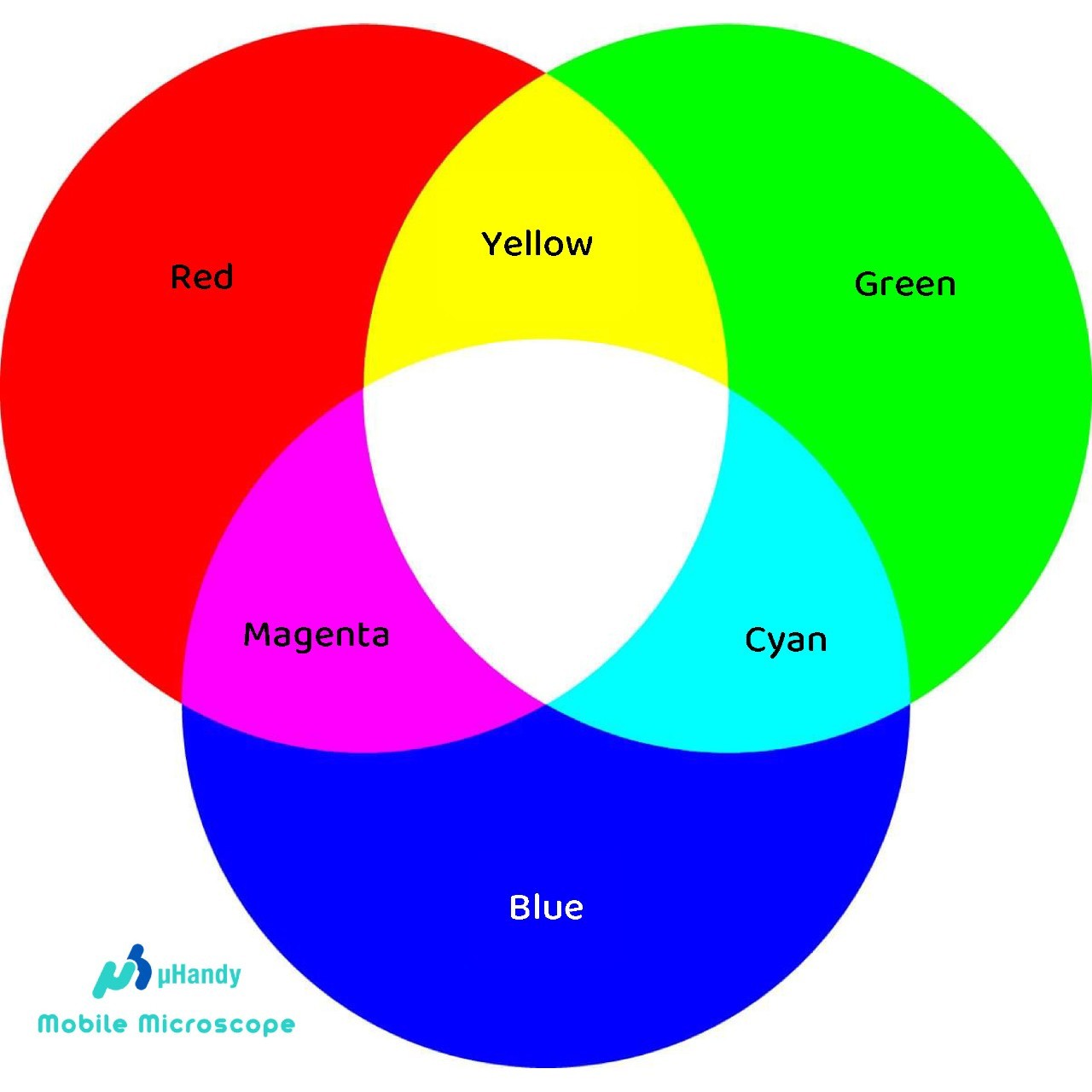Have you ever wondered how your eyes perceive different colors on the screen of your phone or in books and flyers? In order to answer this question let’s get the uHandy Microscope and take a peek at the screen of your phone, computer, or at a printed colored page!
Items You Will Need:
How to Observe:
Just clip the the Lo-Mag Lens onto your smart device and lean in for a good look at a colored image!
We can look at colored flyers, picture books, or milk cartons so with the Lo-Mag Lens we can observe the details in colored printing.

(Color printing under the uHandy Microscope.)
Next, try looking at the screen of your phone, computer monitor, or TV, etc. Please note that some screens and monitors have a thick pane of glass, so the Lo-Mag Lens may not be able to focus. Experiment with another screen if the Lo-Mag Lens is struggling to focus, below is an example of what it should look like when the lens is in focus:

Under the Lo-Mag Lens we can observe the RGB color model (red, green, blue) of subpixels. Different screens may place the colors in a different order.
Advanced Observations
Below are different blocks of the RGB color model which can be viewed under the Lo-Mag Lens. You can observe that sometimes only a single color is lit up, such as for red or blue. However, under the Lo-Mag Lens we can see that the red and green subpixels are both lit up to create the color yellow. When the screen appears to be white it is because all three colors of subpixels are lit up.

With the Lo-Mag Lens, we can observe the RGB color model and how red and green are mixed to create yellow.
Supplemental Information
Under the Lo-Mag Lens we can observe the RGB color mode, which we already observed. CMYK represents the four primary pigments used in the printing process: C for cyan, M for magenta, Y for yellow, and K for black.
Why must we differentiate between RGB and CMYK?
This is because RGB is an additive process, which is why it is commonly used in monitors and screens. The screen releases the colored light which is then picked up by the human eye and the eye recognizes different combinations of red, green, and blue light to create and see colors.
However, colors printed on a surface do not glow. In fact they absorb light, which is why CMYK is considered a subtractive process. Below is a chart showing the relationship between RGB and CMYK colors. You will observe that on the color wheel cyan is directly opposite of red, magenta is opposite green, and yellow is opposite of blue. So certain colors are removed during the printing process, for example, in order to print the color magenta, green is removed.

When cyan, magenta, and yellow are printed together they will produce the color black. However, if we were to use this when printing it would saturate the paper with ink, making the paper heavy and wet, which is why printing cartridges often include a fourth color: black.
This also answers the question: Why does the printed version not match the colors on the screen?
Because the RGB color model is additive and the CMYK printing process is subtractive, therefore printed versions often look muted.
Share your uHandy Microscope observations with us!






